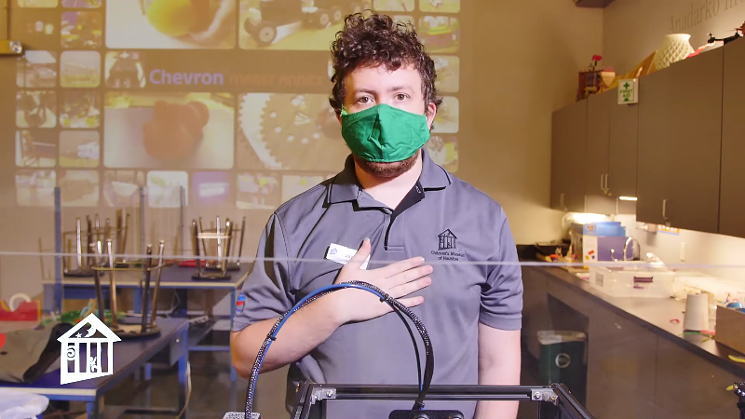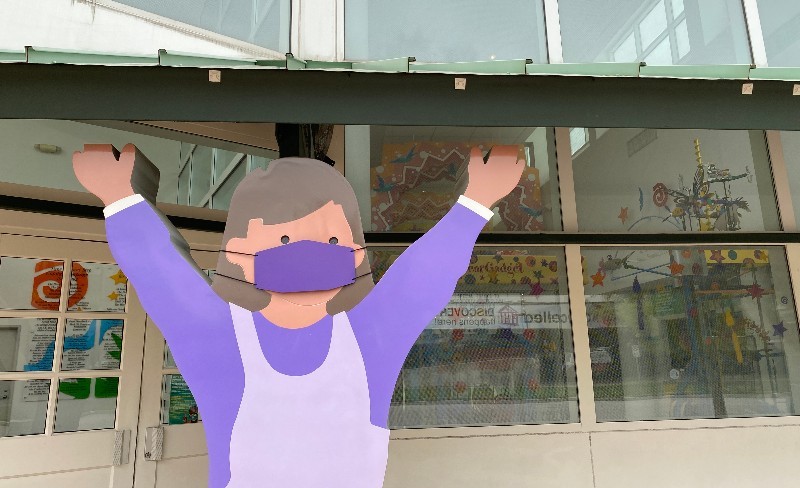In the middle of a contagious disease outbreak, operating a safe haven for families that caters to curious children who are encouraged to get up close and personal with hands-on learning is no small task.
Children’s Museum Houston has been grappling with the realities of the COVID-19 pandemic for almost six months now, and the ongoing crisis has caused the local nonprofit organization to shift their operations significantly since mid-March. Like museums across the world, CMH has struggled to balance the safety of the community with providing much needed services to local residents, and in CMH's case, a lifeline for stir-crazy kids and parents struggling to keep their children engaged and entertained during quarantine.
After temporarily closing to implement U.S. Centers for Disease Control and World Health Organization social distancing and sanitation best practices, CMH reopened in early June. But due to a combination of low in-person attendance over the summer and the high demand for its off-site, digital programming, CMH’s facilities are once again closed to the public for the foreseeable future as the museum has decided to put all its resources into virtual education, for now.
“It was a Herculean effort, but I don’t think it felt that way to us. Our educators were just so ready to do whatever they needed to do,” said Cheryl McCallum, the museum’s Director of Education.
Back on March 15, halfway into the Houston area’s spring break, the museum first announced that it would close indefinitely. As staff began figuring out how to restructure the flow of the museum to make social distancing possible and what types of heightened sanitation measures would need to be implemented, CMH’s team of 20 educators rallied to put together new daily doses of video content families could access through Facebook, Instagram and YouTube.
Two days later, the “Daily Virtual Learning Schedule” was up and running. CMH educators kept cranking out five videos a day, seven days a week for two and a half months, until the museum finally reopened its doors to the public on June 3. After that, the video content kept rolling at a reduced clip of five days a week.
“By the end of June, we’d produced over 600 new segments and had five million-plus views through all the social media outlets that we were using,” McCallum said.
In the weeks leading up to CMH’s June reopening, staff were busy working around the clock to make the museum as safe as possible for kids and families, which was a tricky proposition given how many exhibits are structured to encourage hands-on learning.
“We have a pretty dense facility with interactive activities, and it’s not really set up for a pandemic landscape,” McCallum said. She explained that the museum chose to remove 48 interactive exhibit components to encourage young visitors to keep their hands to themselves and restructured things to allow for a one-way flow through the building to make social distancing easier.
CMH began using thermal scanners to take guests' temperatures upon entering the museum, and also required all visitors over the age of two to wear masks. The museum had disposable masks on hand for anyone who didn’t bring one. Tickets had to be bought ahead of time, and visitors had to choose a specific 2.5-hour visit window so that CMH could ensure the building would never exceed 20 percent capacity. That occupancy target was 5 percent lower than what was allowed by Gov. Greg Abbott’s statewide reopening guidelines at the time, which the museum chose "to be extra careful," McCallum said.
Museum staff also installed new HEPA air filters and UV lights inside of air ducts to help trap and kill more airborne germs. It even ordered a special nano-tech tape with a surface that kills germs on contact, which was put over building door handles and other high-touch areas. Dedicated cleaning crews were also constantly spread out across the museum, frequently sanitizing busy areas before deep-cleaning the entire building each night.
While CMH saw 17,000 guests come through its doors between June and August, that was only about ten percent of the typical audience served during that same period of time in other years. Due to that dramatic decrease in museum attendance coupled with the fact that Houston’s kids were about to have their days occupied by the new school year, whether on campus or remote, CMH decided to once again shut its doors at the end of August.
“We realized that we could better accomplish our mission if we closed the doors and began focusing on serving the community where they were at the time, at home or at school,” McCallum said.

A Children's Museum Houston educator guided kids through at-home science activities through a YouTube video, one of many the museum has produced during the pandemic.
Screenshot
It was a difficult decision, but CMH chose to move forward virtually into the fall and beyond in order to maximize its limited resources as a nonprofit, especially the contributions of sponsors upon whom the museum relies. Comparing the 17,000 summer museum visitors to the 45,000 children who received books and at-home activity packs made available through the summer also helped CMH realize it could be a smart strategy to put all of its energy toward expanding their clearly popular off-site offerings.
The Children’s Museum is now nine days into their new “All-Time Access” programming. The daily broadcast lineup from CMH’s team of educators will continue in addition to planned live chats with CMH’s “team of geeks” and science experts, McCallum said, all while the museum works toward building out a brand-new offering: full “choose your own path” virtual tours of the CMH.
“Our first tour will be available to the public in October,” McCallum said. Through their computers at home, kids will be able guide themselves through the virtually-scanned museum, and will be prompted to click on glowing circle icons superimposed on their screen to play videos of educators explaining exhibits and of children experiencing them firsthand.
CMH is also offering a selection of online courses that can either be used by children at home or by area schools as part of their virtual curriculum, with chemistry, art, science and computer software courses available to choose from. One course option teaches how to use a kid-friendly piece of design software called TinkerCAD, which lets users digitally design objects that can then be brought to life with the museum’s 3D printer.
“It’s possible that they can design things that we would print for them, and either mail to them or have it ready for pickup here at the museum in some way, so we’re thinking about those kinds of things as well,” McCallum said.
As to when the museum will reopen, McCallum said there isn’t a hard and fast plan in place, but that CMH won’t invite visitors back inside until families feel safe coming out in larger numbers than they did during the summer months. “We don’t really have a definition of what that means necessarily,” McCallum explained, before she speculated that the museum may not reopen physically for months.
“We don’t think it’s gonna be next month, but hopefully it could be early next calendar year depending on how things go with vaccines and other measures put into place,” she said.


